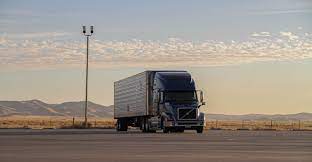In today’s fast-paced and highly competitive business world, the efficient management of warehousing and logistics is essential for success. Whether you’re a manufacturer, distributor, or retailer, getting your products to the right place at the right time is crucial. In this comprehensive guide, we will delve into the world of warehousing and logistics, exploring best practices, emerging trends, and strategies for optimizing your supply chain operations.
Chapter 1: The Basics of Warehousing
In this chapter, we’ll start with the fundamentals of warehousing. We’ll discuss the different types of warehouses, the role they play in the supply chain, and how to choose the right warehouse location for your business. We’ll also touch on the key factors to consider in warehouse design and layout to maximize efficiency.
Chapter 2: Inventory Management and Control
Effective inventory management is at the heart of successful warehousing and logistics. We’ll explore the importance of accurate inventory control, strategies for minimizing losses, and the role of technology in streamlining this critical process.
Chapter 3: Warehouse Safety and Security
Safety is paramount in any warehouse operation. In this chapter, we will discuss safety guidelines, best practices for warehouse security, and how to create a secure working environment for your employees and assets.
Chapter 4: Leveraging Technology in Warehousing
The digital age has transformed the way warehousing and logistics operate. We’ll delve into how technology, including warehouse management systems (WMS) and automation, can enhance efficiency, accuracy, and visibility in your supply chain.
Chapter 5: Sustainable Practices in Warehousing
As environmental concerns grow, many businesses are turning to sustainable practices. We’ll explore green warehousing, discussing eco-friendly initiatives, energy-efficient facilities, and the benefits of reducing your carbon footprint.
Chapter 6: The E-commerce Revolution
E-commerce has reshaped the logistics landscape. We’ll provide insights into e-commerce logistics, last-mile delivery challenges, and strategies to excel in this rapidly growing sector.
Chapter 7: Supply Chain Resilience
The world is full of unexpected challenges, from natural disasters to global pandemics. In this chapter, we’ll talk about supply chain resilience, discussing strategies to build a robust and adaptable supply chain that can weather any storm.
Chapter 8: The Future of Warehousing and Logistics
To conclude our guide, we’ll explore the latest trends and innovations in warehousing and logistics. We’ll discuss topics like cold chain logistics, automated warehousing, and the role of Artificial Intelligence (AI) in the future of the industry.
Conclusion:
Warehousing and logistics are integral parts of the modern business landscape. Mastering these areas is essential for efficient supply chain management, customer satisfaction, and ultimately, business success. By implementing the strategies and best practices discussed in this guide, you can optimize your warehousing and logistics operations, stay ahead of industry trends, and adapt to the ever-changing business landscape.
Remember, the world of warehousing and logistics is continuously evolving. Stay informed, keep learning, and be ready to adapt to new technologies and practices to ensure the success of your business in the years to come.



